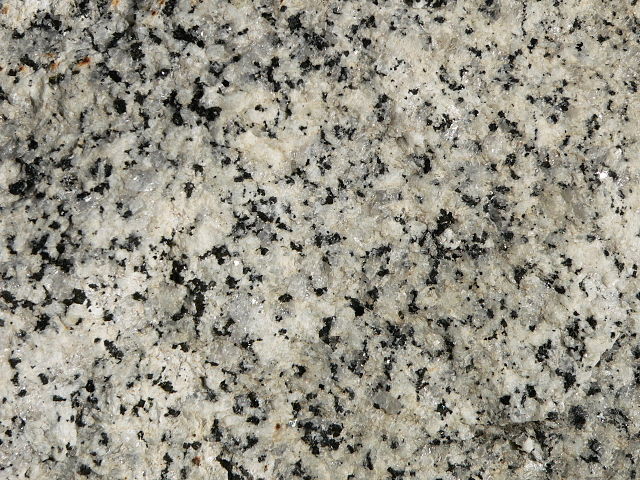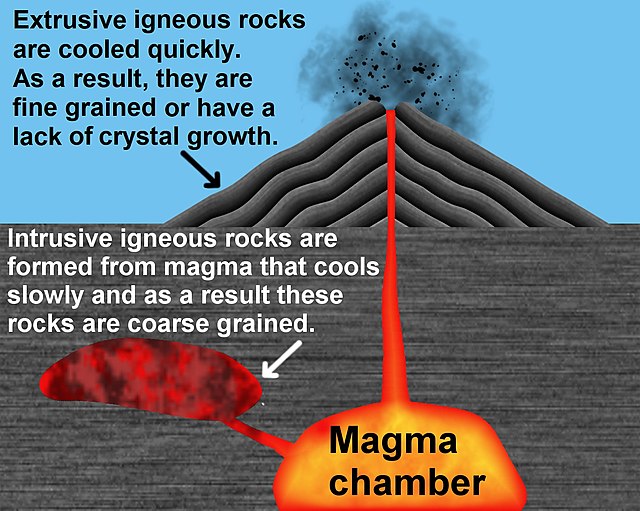In geology, felsic is a modifier describing igneous rocks that are relatively rich in elements that form feldspar and quartz. It is contrasted with mafic rocks, which are relatively richer in magnesium and iron. Felsic refers to silicate minerals, magma, and rocks which are enriched in the lighter elements such as silicon, oxygen, aluminium, sodium, and potassium. Felsic magma or lava is higher in viscosity than mafic magma/lava, and have low temperatures to keep the felsic minerals molten.
A felsic volcanic lithic fragment, as seen in a petrographic microscope. Scale box is in millimeters.
Close-up of granite from Yosemite National Park.
A specimen of rhyolite.
Igneous rock, or magmatic rock, is one of the three main rock types, the others being sedimentary and metamorphic. Igneous rocks are formed through the cooling and solidification of magma or lava.
Geologic provinces of the world (USGS) Shield Platform Orogen Basin Large igneous province Extended crust Oceanic crust: 0–20 Ma 20–65 Ma >65 Ma
Volcanic eruptions of lava are major sources of igneous rocks. (Mayon volcano in the Philippines, erupting in 2009)
Natural columns of igneous rock separated from each other by columnar joints, in Madeira
Formation of igneous rock







